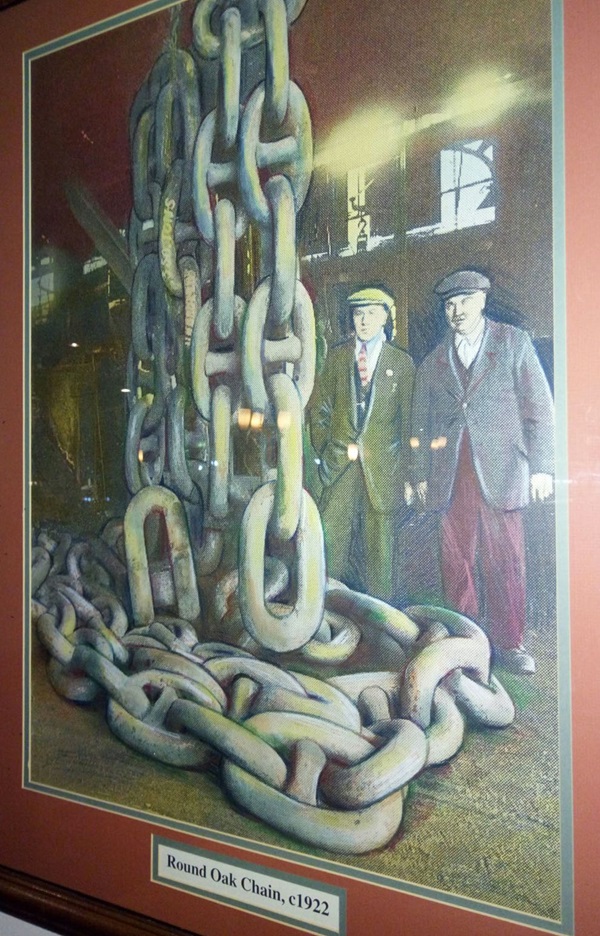Pub history
The Waterfront Inn
This pub is built on the site of the Round Oak Steel Works.

Part of The Waterfront complex, this inn stands facing the Dudley No.1 Canal. The waterway stood next to the New Level Ironworks, recalled by nearby New Level Street. In 1857, the Round Oak Ironworks was established on the site by William, 11th Baron Ward (later Earl of Dudley). At its peak, several thousand people worked here. After its closure, in 1982, The Merry Hill Centre and The Waterfront were built on its 200-acre site.
Illustrations and text about the Round Oak Iron & Steel Works

The text reads: Iron production was once an important local industry. The Round Oak Iron Works, established in 1857 on the site of the New Level Ironworks, was the largest of all such works and at its peak employed several thousand people.
Originally established by William, 11th Baron Ward (later Earl of Dudley), the works became the Earl of Dudley’s Round Oak Iron & Steel Works in 1897. After its closure in 1982, the Merry Hill Centre and The Waterfront (the location of this J D Wetherspoon pub) were developed on the 200-acre site.
Top: The Earl of Dudley
A painting of the Round Oak Steel Works, from the canal off Level Street

The text reads: This was the most squalid part of the old steel works. It is now the site of the Waterfront development.
Illustrations and text about glassmaking

The text reads: Brierley Hill’s glassmaking tradition dates back to the 17th century and the arrival of exiled Huguenot craftsmen. The skills of these French refugees, who had fled religious persecution in their native country, were to make this area famous for its crystal glass.
Recorded in parish registers as Gentlemen Glass Makers, they and their sons married into leading local families. However, as the industry grew, it became known as ‘Stourbridge glass’ as the nearby town of that name had facilities for banking and accommodation for dealers.
Top: Glassmaking, c1750
Left: Glassblowing
Above: Rock crystal table glass service
A print of a round oak chain, c1922

Prints of Round Oak Iron & Steel Works

Top: Road Oak Ironworks, 1870
Above: Demolition of Round Oak, 1920s
External photograph of the building – main entrance




